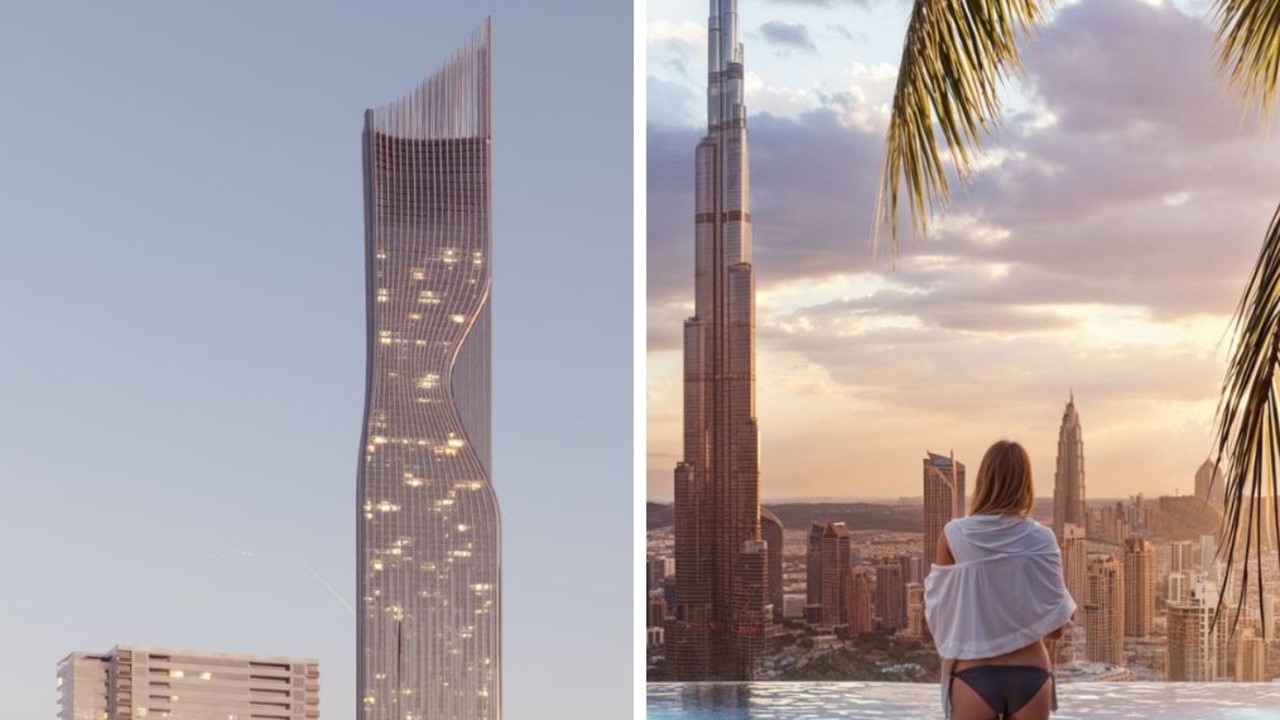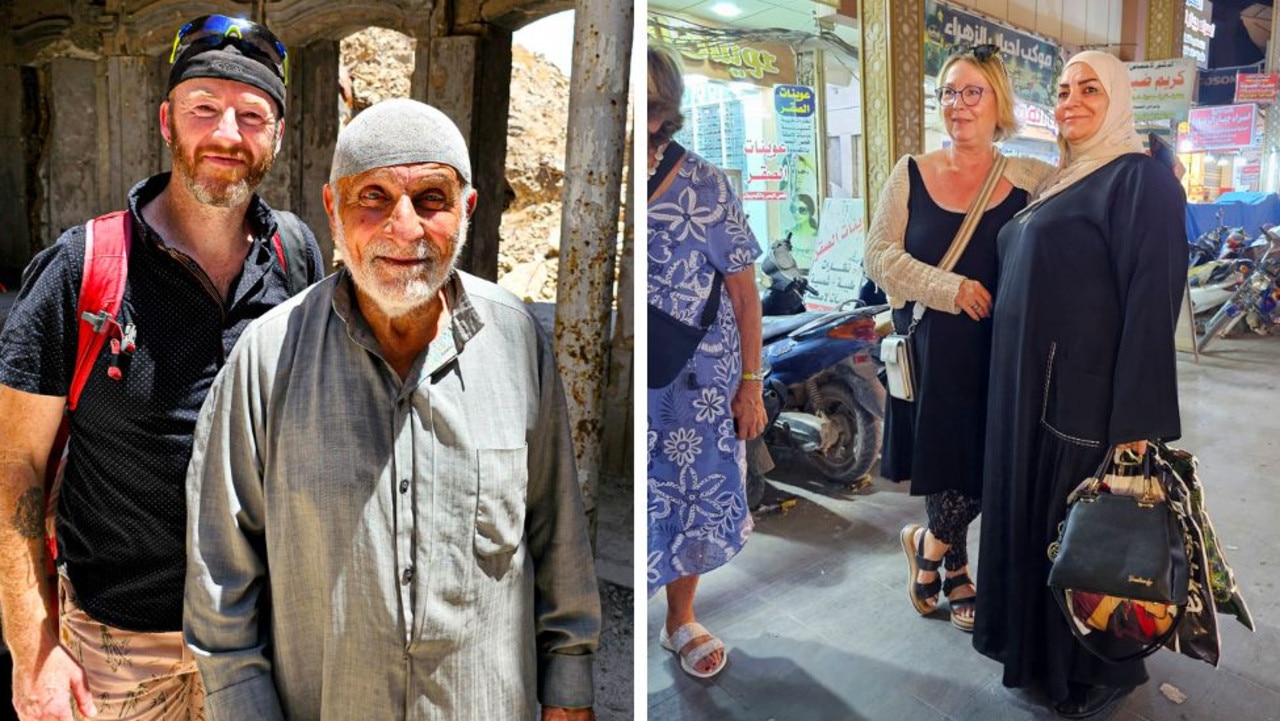Why you should add Iran to your bucket list
“SECONDS after landing we saw a corpse lying next to a burning car. Our rickety tourist bus seemed to be falling apart, despite having VIP on the side.”

THERE were rumours that the feared Revolutionary Guard did not want us in Iran and we might be followed or detained.
Our security briefing warned we would have to wear long-sleeved shirts, there would be no alcohol, credit cards would not work and we could not shake hands with women. What was I getting myself into? But 24 hours later I was bathed in heat watching a fountain shoot water above the painted dome of a mosque in the cradle of one of the world’s oldest civilisations. Walking around the historic city of Isfahan is like stepping back in time. It also provides intriguing insights into life in the paranoid Islamic republic. Imam Square in the city’s centre is a UNESCO World Heritage Site, built between 1598 and 1629, and the Shah Mosque on the south side is a masterpiece of Persian architecture. Huge stone columns curve into impossibly large roof beams covered in handpainted mosaic tiles. The rooms are awe inspiring — deep blue, lemon, ivory and gold slabs framed by marble walls and Arabic inscriptions from the Koran. Built for Shah Abbas, it is said to make even non-believers feel the presence of God. The towering entrance looks like a huge spaceship just landed on Earth. Isfahan really is “the Florence of the Middle East”, as one Iranian described it. Another highlight was the Malek Sultan Jarchibashi restaurant in the basement of a bathhouse built 450 years ago. It has a tiled floor and walls, expertly painted columns and Persian cloths on every table. The food was sumptuous — saffron rice, custard-yellow yoghurt and piles of meat and chicken washed down with a salty yoghurt drink that took a bit of getting used to. We walked down the Square’s bazaar, redolent with the smell of fresh spices, olives and lemons, to browse the clothes, ornaments and intricately carved picture frames and chess sets on sale. In the Armenian quarter, extravagant paintings adorn the walls and ceiling of the Christian church. The genocide carried out by Turkish troops in 1915 is commemorated in the museum. The next day we took a local Qeshm Air flight back to the capital Tehran. I am not a huge fan of the airline. Security failed to check our passports at the airport and the British Aerospace 146 jet we flew in looked older than ideal. But Qeshm has a good safety record and flying is a practical way of getting around Iran compared to the dangerous roads. Seconds after landing we saw a male corpse lying next to a burning car and our rickety tourist bus seemed to be falling apart at the seams, despite having VIP printed on the side. Our tour guides were similarly unvarnished and spent much of our three-day trip arguing. Big Dan, as I dubbed him, had a military background and seemed infuriated with Little Dan, who looked like a young version of the Sacha Baron Cohen character Borat and spent most of the trip smoking cigarettes and telling jokes. I was partially convinced Dan was a government spy and the way he barked orders us to come and go did little to dissuade me. His lack of historical knowledge was also suspect. “This plate was painted by Salvador Phillipe, the famous plate painter,” he told us at one museum, despite the inscription stating it was by Salvador Dali, the world-renowned surrealist painter. We had a brutal schedule that left little time for sleep, but the sights of Iran — the minarets and gleaming palaces — constantly revived my senses. On our last day we headed to the north of Tehran where a rocky path leads up a mountainside dotted with restaurants. A ski lift sat motionless overhead but during winter this side of town is covered in pristine snow that apparently provides some of the best slopes in the world. The interactions with locals here were amusing. One conversation went like this. “Where are you from?” England. “Do you like Iran?” Yes. “Do you like me?” Ummm, see you later. On the whole I found the Iranians to be surprisingly friendly and with zero hostility to a country their leaders once dubbed “Little Satan”. Most people seemed delighted we had made the effort to visit. Iran is safe — much safer than a night out in London — because the government rules with an iron fist. The main danger is falling on the wrong side of the police. Dual British-nationals have been not to visit as so many, including London-based mum Nazanin Zaghari-Ratcliffe, have been jailed with little explanation. There are less serious annoyances. Your credit cards and debit cards will not work so you need bundles of cash, alcohol is not served anywhere, women have to wear a hijab despite temperatures hitting 35C most days and Tehran can feel crowded and polluted. Despite years of economic hardship due to Western sanctions, the country is not cheap. A cup of fragrant Persian tea can cost 120,000 rials, or £3 (A$4.80), and a shish kebab costs upwards of 177,000 Rials, around £4.50 (A$7.30). But entrance to a museum can be as cheap as 20,000 rials, or 50p (A$0.80). The opulent palaces owned by the last Shah of Iran, Mohammad Reza Pahlavi, and his glamorous wife are another must see. The homes have been immaculately well-maintained, with all the original French antique furniture and crystal chandeliers still intact, and you get a sense of the grotesque excess that led to their downfall with the Islamic revolution in 1979. As I write, Iran is currently one of the most searched-for holiday destinations on the internet, along with Jamaica, according to comparison site cheapflights.co.uk. If you are interested in learning more about the Middle East and having a rich cultural experience, I would add it to your bucket list. This article originally appeared in The Sun and was reproduced with permission.



